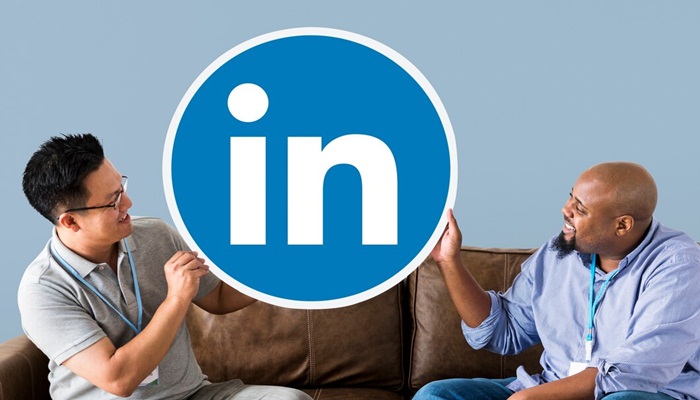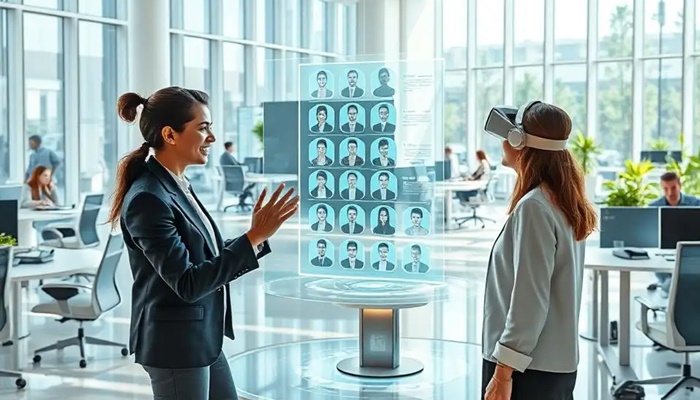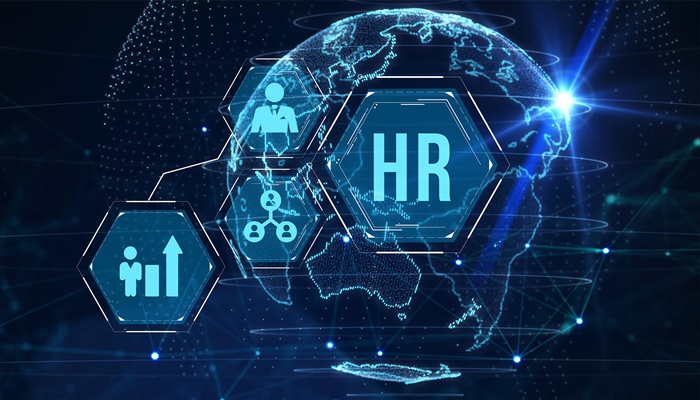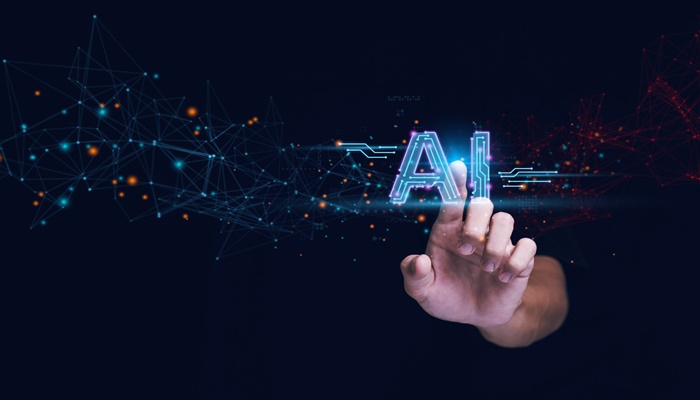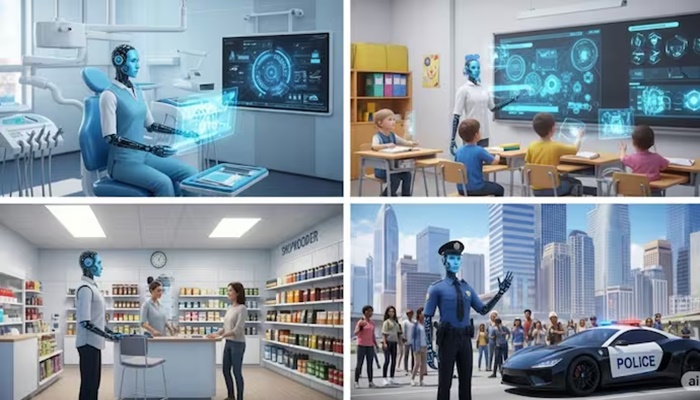Amazon’s million-robot milestone isn’t a headline about machines; it’s a mirror held up to the rest of us. When the world’s largest retailer can choreograph a seven-digit fleet of bots and trim their travel time by 10 percent, value based on speed and repetition migrates from carbon to silicon. That leaves judgment, nuance and adaptability — capabilities AI still fumbles — as the last safe harbor for human talent.
What Is System Thinking?
System thinking is the ability to understand and manage complex, interconnected problems by framing challenges holistically, selecting appropriate models, testing edge cases and translating machine outputs into actionable decisions. It combines domain expertise, data literacy and real-world context.
The Real Meaning of the Millionth Robot
Amazon’s new DeepFleet foundation model now directs more than a million mobile units across 300 facilities, cutting idle minutes and path overlap while “upskilling” 700,000 people into maintenance and support roles. The company frames this as progress for workers, but the subtext is clear: An entire layer of rote activity has vanished.
Consider the ripple effects outside the warehouse walls. When DeepFleet squeezes an extra second out of every robot loop, same-day delivery shifts from a premium perk to baseline expectation, pressuring rival retailers, parcel carriers, and zoning boards to keep up. Amazon hasn’t just automated a building; it has reset the operating assumptions of a global logistics ecosystem that now needs fewer humans in the loop.
And the hits keep coming. Vulcan, the firm’s first tactile cobot, already stows roughly three-quarters of items that once demanded human dexterity. When physical finesse joins endurance and 24/seven stamina, the definition of a “hard” job flips from muscle to meta-skills.
Goodbye Entry-Level, Hello Middle-Skill Meltdown
Anthropic CEO Dario Amodei warns that half of all entry-level white-collar roles could evaporate within five years, potentially bringing a spike in unemployment. Workers already feel the tremor: Only 6 percent believe AI will create more opportunities for them, while a third expect fewer. The same researchers list journalism jobs among those most likely to be automated, with 59 percent of Americans expecting reporters to lose ground to AI.
Yet, the heaviest pressure is hitting one rung higher. Paralegals, project coordinators and other thinking-layer roles are at the bull’s-eye of generative AI disruption. These jobs survive by crunching precedents, summarizing findings or juggling schedules. Today’s models perform all these tasks in milliseconds. When that substrate erodes, the career ladder snaps in the middle.
The Human Edge: System Thinking and Judgment
If algorithms chew through the routine, what remains? Start with system thinking — the craft of framing messy problems, picking a model, testing edge cases and translating machine output into action. One-third of companies already embed generative AI in at least one business function, yet fewer than a third follow best-practice scaling disciplines. Many still hand-check every output. Some studies project that 39 percent of today’s skills will be obsolete by 2030, elevating analytical and creative thinking to the top of the must-have list.
System thinkers sit at the junction of data science, domain context and lived experience. Take a hospital where an ER nurse spots that an imaging-triage model is underprioritizing pediatric scans because children were underrepresented in the training data. That blend of domain empathy and model literacy is the new multiplier.
A New Compact for Leaders
Managers who cling to grunt work as a proving ground are handing that ground to robots. Economists describe automation’s labor impact as a spectrum that begins with displacement, where a machine fully assumes a task and the human role disappears. Then it moves through transformation, in which people stay in the loop but their work mutates to supervising, steering or complementing the technology. Finally, the spectrum ends with creation, the green‑field jobs like robot‑maintenance techs, AI‑compliance officers or prompt engineers, that materialize only because the technology exists.
Smart firms lean hard into the latter two. Here, Johnson and Johnson offered a path. They used their 41‑skill “career lattice” to help a supply‑chain planner in the Consumer Health unit pivot sideways into a data‑visualization analyst role inside Medical Devices. The lattice showed that her existing strengths in master‑data management and risk‑forecasting mapped 80 percent against the target role. The company covered the remaining gap with a six‑week Power BI boot camp and a mentoring sprint. Employees have since logged more than 20 percent higher use of the learning platform and 90 percent of technologists have completed at least one lateral‑move skill plan.
Prompt engineering may be the new Excel, but the premium will accrue to those who can flag bad data, weigh trade-offs and hold ethical lines. Scholars writing in Time have floated the concept of sovereign AI wealth funds to recycle automation windfalls into a public good. This system would be like a digital‑age cousin of Norway’s oil fund: The government takes an equity stake in nationally strategic AI ventures, reinvests the dividends, and uses the gains to cushion workers against disruption or to bankroll universal up‑/re‑skilling.
Whether governments act on this idea or not, companies still need humans to decide what “public good” even means. Even if a sovereign fund never materializes, firms must still decide which AI projects advance company goals without eroding social trust. Frameworks from UNESCO and the WEF stress that human oversight is non‑delegable; boards remain on the hook for questions such as bias thresholds, acceptable failure rates and environmental trade‑offs.
What Workers Can Do Now
Generative models can draft memos, design logos or debug code in seconds, but they still depend on human stewards to catch the trapdoors.
1. Find Places Where Judgment Matters
First, catalog the moments where context, stakes, and ambiguity converge: regulatory sign-offs, sensitive negotiations and crisis triage. Those judgment calls remain stubbornly human; double down on them. They endure because today’s large models remain brittle on contextual reasoning, ethics and cross‑domain synthesis.
The skills that shore up that gap are increasingly well‑mapped: the WEF still ranks analytical and creative thinking, resilience and flexibility at the top of its 2025 skills index, ahead of any purely technical knack. OpenAI’s chief economist echoes that priority list for the next generation, adding adaptability and emotional intelligence as AI‑proof traits.
2. Start Practicing With AI Agents
Next, make an AI agent your daily sparring partner. Feed it low-stakes chores like first-pass research, data cleanup and brainstorming prompts, and then grade the output like a professor with a red pen. The exercise trains two muscles at once, developing faster ideation and sharper oversight.
3. Catalog Your Wins
And remember that mastery leaves a paper trail. Keep a personal changelog of every workflow you redesigned or process you accelerated with AI. Link each pivot to a measurable outcome — cost avoided, cycles saved, margin added — and watch your “time-to-pivot” shrink. In a marketplace where knowledge spoils like milk, adaptability is a sturdier moat than any single credential.
Why the Fastest Learners Win
By the turn of the decade, the typical Amazon fulfillment center will have flipped its headcount with more robots than people moving goods from shelf to truck. What matters more is the chain reaction outside those walls. As boardrooms chase the same productivity curve that DeepFleet just proved possible, global spending on digital‑first “rearchitecture” is on track to eclipse today’s capital budgets for bricks and mortar. When that happens, adaptability will outperform every technical credential on a résumé.
Early evidence is already here: Productivity jumps only when companies redeploy the hours AI frees up, not when they bank the savings. Investors see the same signal; analysts warn that the next wave of automation exposes hundreds of millions of roles, yet raises long‑run GDP precisely because human ingenuity migrates to higher‑order problems.
Within five years, “time‑to‑pivot” will replace “years of experience” as the default talent filter. Boards will ask how quickly a candidate can retool a process alongside an LLM, not how long they have done the old job. Workers will log adaptive wins in personal changelogs the way they once tallied certifications. Organizations that codify this metric (and budget for perpetual reskilling rather than one‑off training drives) will harvest the upside of the AI curve. Those that don’t will discover, often brutally, that robot density is only the visible tip of the transformation. The deeper shift is from ability to adaptability as the currency of work.
Source- https://builtin.com/articles/system-thinking-career-skill





